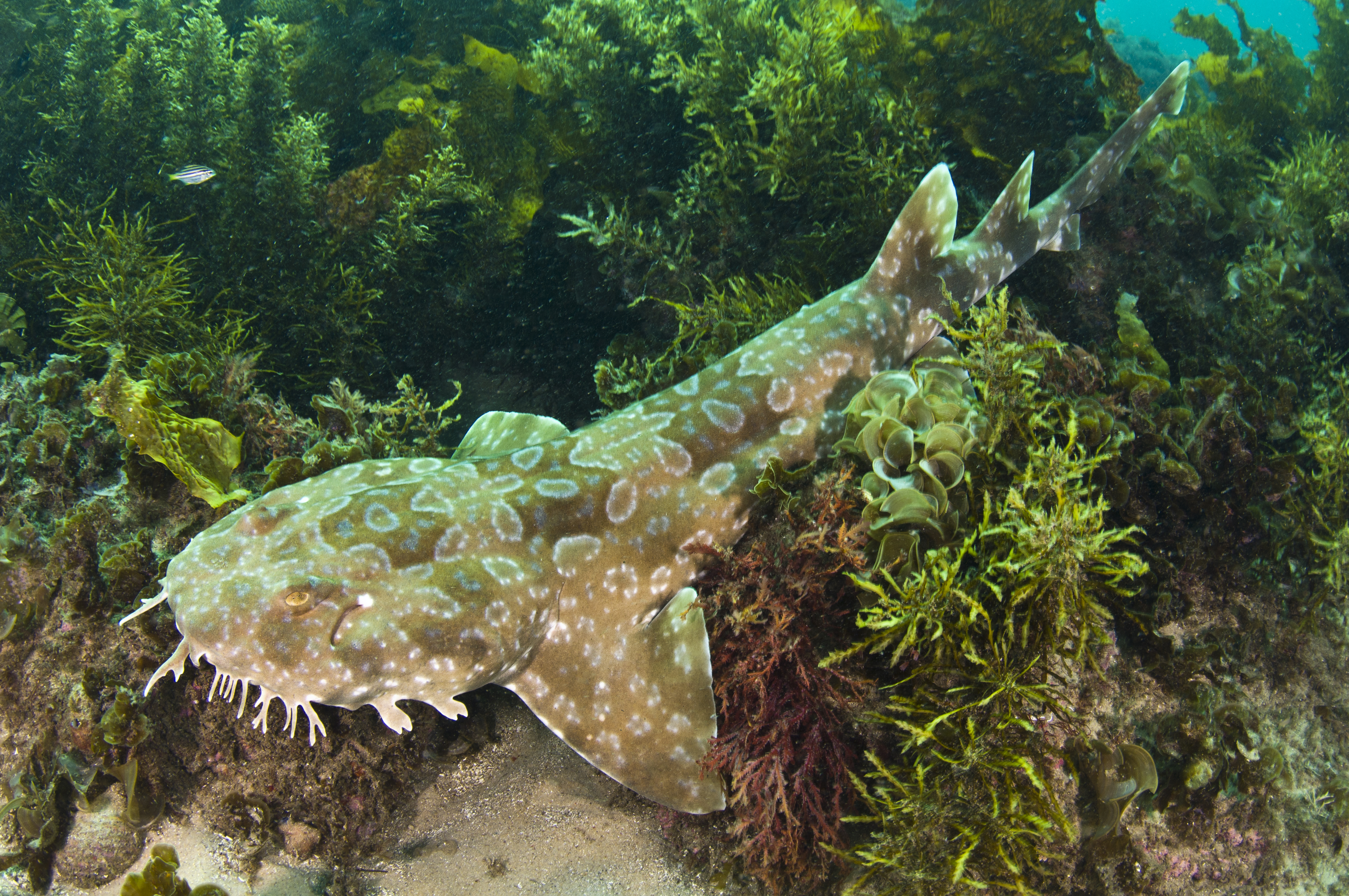Wobbegong shark is a shark with a flattened body and skin patterned with spots, bands, and blotches. Wobbegongs have a fringe of fleshy growths around their head. Wobbegongs belong to a group called carpet sharks. This group is named for the spotted patterns on many carpet sharks. They resemble decorative patterns on carpets.
Wobbegongs have both dark and light spots and blotches. Their overall color ranges from brown or golden brown to sand colored, gray, or light green. Different species (kinds) of wobbegongs have different patterns on their skin. For example, the spots on the spotted wobbegong are arranged in rings. The floral banded wobbegong has flower-shaped patches.
Wobbegongs live in temperate and subtropical areas of the Indian and Pacific Oceans. Most wobbegongs live along the coast of Australia or around Indonesia and the Philippines. The Japanese wobbegong is found along the coast of East Asia. Many kinds of wobbegongs prefer shallow coastal waters and coral reefs. Others live in deeper, colder parts of the ocean.
Wobbegongs eat fish, including other sharks. They also eat invertebrates (animals without a backbone) such as octopuses. A wobbegong conceals itself from prey by quietly lying still. Its patterned skin and fringed face help it hide among rocks and sand. When an animal gets close enough, the wobbegong opens its wide mouth and sucks the animal in. During the day, wobbegongs rest on the sandy bottom, occasionally catching food. At night, they hunt more actively.
Wobbegongs are ovoviviparous—that is, the female carries the eggs within her body until they hatch. Newly hatched pups are about 9 inches (22 centimeters) long. Small wobbegong species grow to about 39 inches (1 meter) long as adults. The largest species, including the spotted wobbegong, may grow to over 10 feet (3 meters).
Wobbegongs have occasionally bitten swimmers. No wobbegong bite has killed a person. But divers should take care not to disturb them, because their teeth are sharp and bites can seriously injure a human. People sometimes eat wobbegongs. Biologists do not consider wobbegongs to be endangered (at risk of extinction in the near future).

